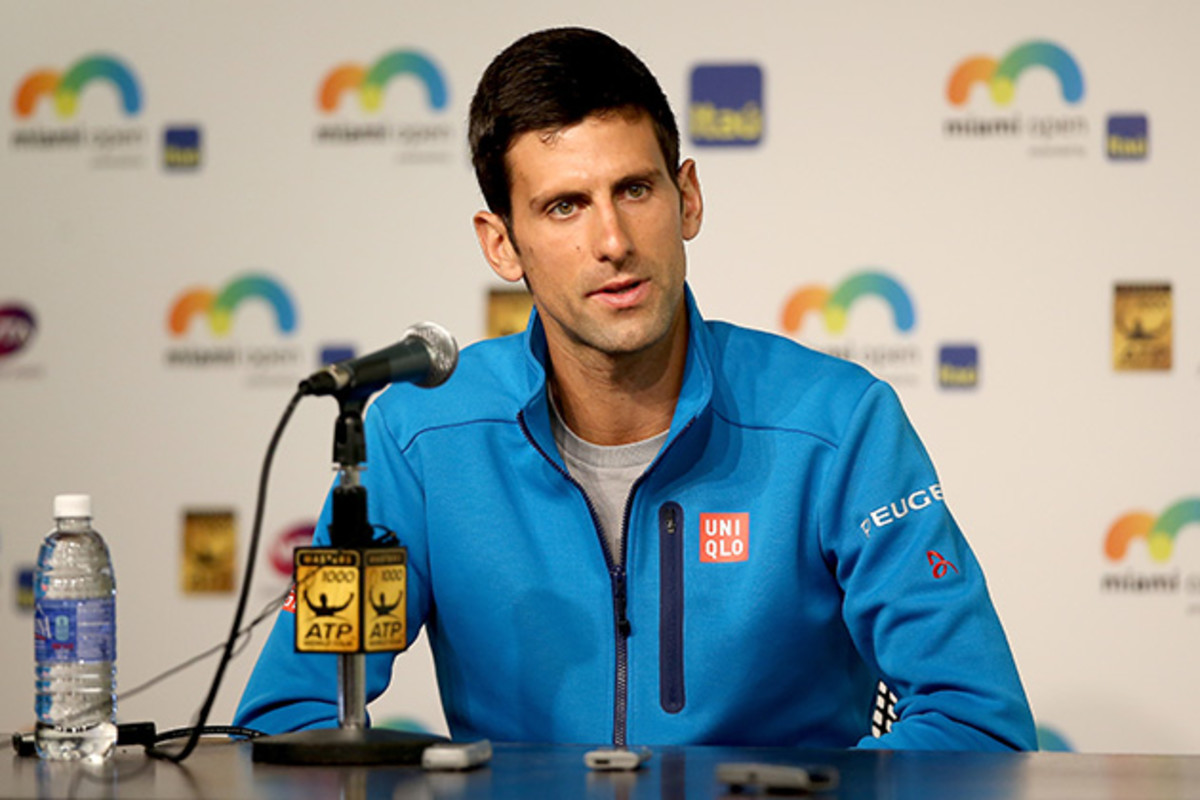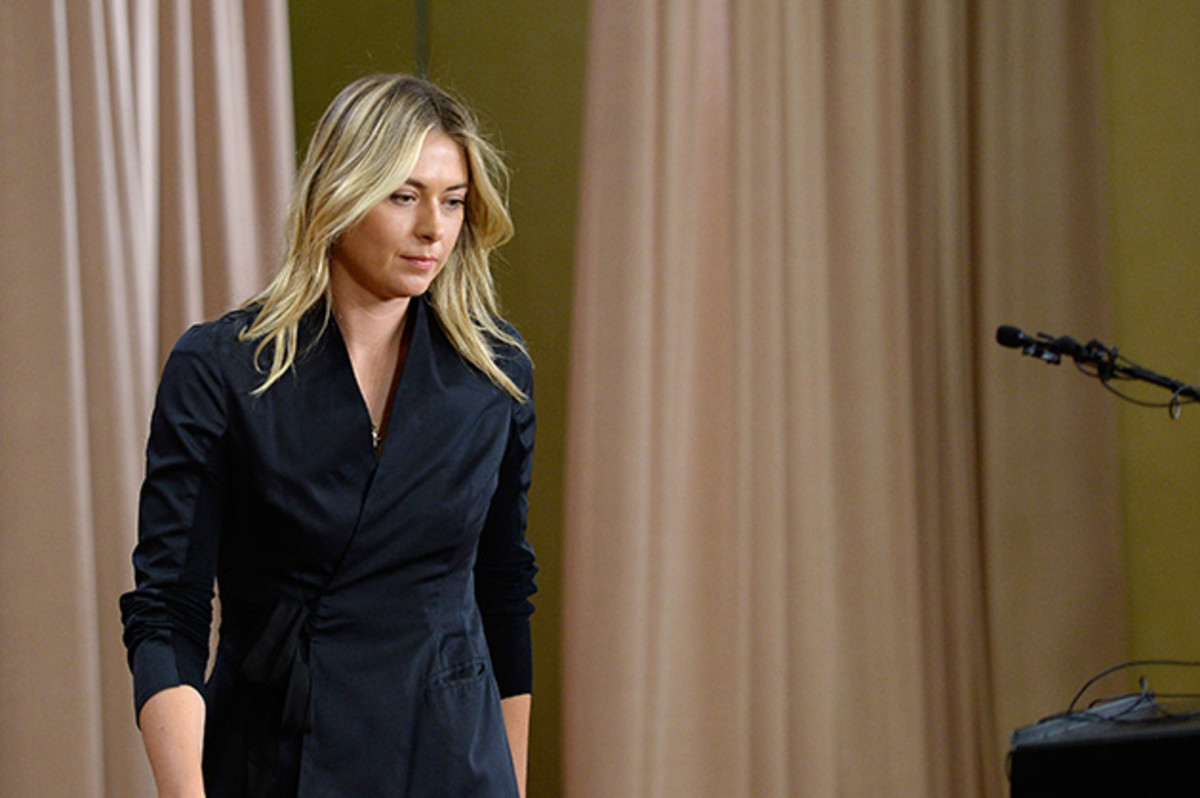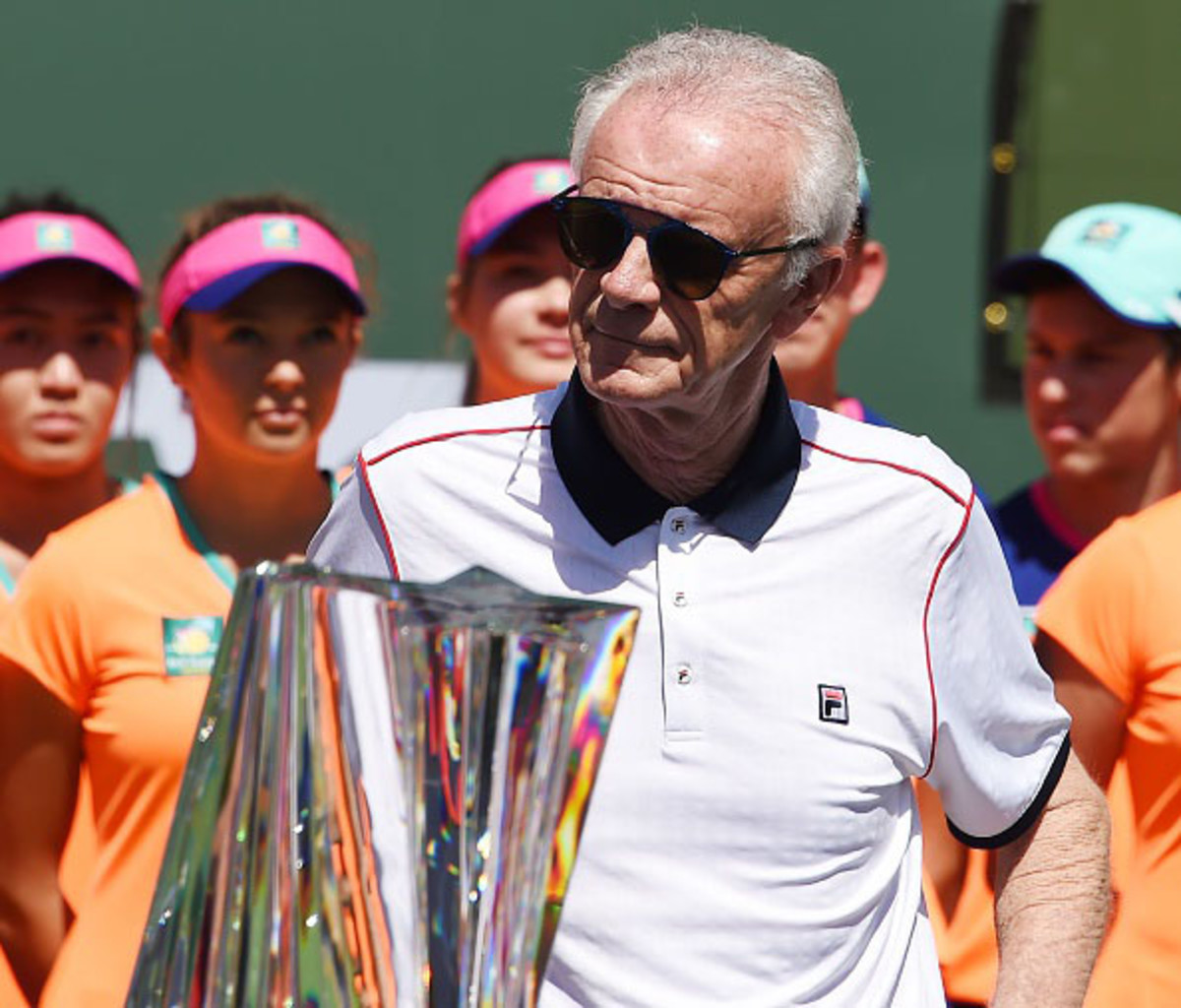Stuck under a dark cloud: Can tennis weather the scandal storm?

Is it me or has tennis all of a sudden turned into less of a “gentleman’s game” and more of a Page Six gossip column? Four months into the calendar year and the majority of headlines haven’t been about Serena Williams’s quest for Slam No. 22 or Novak Djokovic’s sheer dominance in the ATP. No, tennis’ top stories have included accusations of gambling and match fixing, failed drug tests, sexist CEOs and a coach turned alleged murderer. The gossip and scandals have been so salacious that I’ve sometimes wondered if I was watching Tennis Channel or TMZ.
Tennis used to pride itself on niceties and proper etiquette. When on-court silence was golden, a bow and a curtsy were the norm and playing by the rules was the obvious expectation. Sure, there were exceptions to the refined persona: Petulant hell-raisers like John McEnroe and Jimmy Connors asserting their bad boy status for the masses or the original noisemaker, Monica Seles, who showered the court with a cacophony of grunts. And let’s not forget the self-admitted male chauvinist himself, Bobby Riggs, who once championed the Battle of the Sexes, only to get demolished by Billie Jean King. There were also dark moments, such as Seles’s on-court stabbing by a crazed Steffi Graf fan during a match in Hamburg in 1993 or the relentless boos and alleged racial taunts by the crowd against the Williams sisters at Indian Wells in 2001.
But those were all anomalies in a sport that oozed sophistication and decorum. Tennis was, for the most part, prim and proper; a culture that carried its decencies and traditions around like badges of honor. So draconian were some of its rules and codes of conduct that 21-time Grand Slam doubles champion Pam Shriver was once given a warning during a match for shouting her own name. “The umpire thought I had shouted damn in instead of Pam,” Shriver said of the offense.
Sharapova's negligence, drug admission raises many questions
Yet for all of its genteel and sophistication, tennis has gone through a rebellious metamorphosis over the past few years, one in which the grunts have turned into blood curdling screams and the on-court tantrums have become far more tawdry than anything McEnroe and Connors had to offer. Even the crowds have changed. It used to be an absolute sin for fans to talk loudly and move about the stands during points. Now it seems the rules and umpire cautions have softened so much that spectators are constantly chattering and entering and exiting the stadium as freely as they please.
• WERTHEIM: Why Djokovic will continue to dominate ATP
Yes, in an effort to increase viewership and make the sport more fan-friendly, tennis has seemingly dummied itself down to the likes of those other, less refined sports. After all, there’s no such thing as bad publicity, right?

Even with feats like the athletic dominance of Venus and Serena or the rise of the Big Four—Roger Federer, Rafael Nadal, Novak Djokovic and Andy Murray—the action on the court just hasn’t been enough to keep the popularity on par with other sports, especially in the U.S.
A winner at Wimbledon in 1987, Pat Cash once called tennis the b-word: boring. Six-time Grand Slam champ Boris Becker said the game was too politically correct and the passionate rivalries that once captivated the crowds had been replaced by fake, on-court friendliness. Even Federer, the Swiss Maestro and 17-time Grand Slam champion, told GQ Australia in 2014 that this generation of ATP players was often too nice to one other. Wait, is that the Roger Federer talking or Conor McGregor?
End the debate: Equal pay for men, women is asset to tennis
Actually in the minds of some, Federer is not too far off in his suggestion. In his 2011 essay, “Tennis May Need a Few More Brawls,” Wall Street Journal columnist Jason Gay called for a more gritty form of court play, posing the question, “Would you watch more tennis if it got down and dirty like Jersey Shore?” While Snookie and the Situation haven’t steamrolled the court just yet, tennis has rolled up its sleeves and gotten a bit dirty in some areas of the game.
There was Serena’s infamous meltdown and line judge tirade during the semifinals of the 2009 U.S. Open, after being called for a foot fault. Just a year later, Grigor Dimitrov stormed off the court at a tournament in Helsinki and forcefully shoved an umpire in the chest. Then there was the 2011 Austrian League match between Stefan Koubek and Daniel Köllerer, in which Koubek was disqualified for choking Köllerer during the changeover. (Köllerer already had his own bad boy label for fighting a player in the locker room and allegedly calling a Brazilian player a monkey during a separate incident. At the end of 2011, Köllerer received a lifetime ban from tennis for match fixing.)
Although they border on the extreme, these types of episodes and confrontations are becoming less out of the ordinary in tennis.

Beyond the Baseline: SI's tennis podcast
Sports Illustrated Podcast Network



Take resident bad boy Nick Kyrgios, for example. Despite turning pro only three years ago, Kyrgios has a list of offenses and fines that would make even Mike Tyson blush. The Australian has made a habit of cursing at both spectators and umpires during matches, and has even been accused of tanking games (see his fourth round loss to Richard Gasquet at Wimbledon in 2015). In a Rogers Cup match against Stan Wawrinka last August, Kyrgios made obscene comments about Wawrinka’s girlfriend and another player, which led to a altercation in the locker room, a $10,000 fine and a six month probationary period handed down by the ITF. Forget tennis code. What happened to Bro Code?

Then there is the issue of doping. Tennis’s governing body has always maintained that it was a clean sport, free from the PED stains of Balco, HGH or the cream and the clear. Andre Agassi admitting that he used crystal meth in the late ‘90s? Martina Hingis’s positive test for cocaine in 2007? Isolated incidents regarding recreational drugs, not PEDs. Sure there have been whispers and locker room finger pointing, but nothing was ever substantiated. Since the creation of the World Anti-Doping Agency in 1999, tennis has boasted about its superior anti-doping program and its stringent testing guidelines. All of that changed in January, however, when five-time Grand Slam champion Maria Sharapova admitted that she had tested positive for the recently banned substance meldonium. She also said she had been taking the drug for ten years. Although the ITF sends out annual updates to its lists of banned substances, Sharapova acknowledged that neither she nor anyone in her camp clicked the link in the email to open the list.
The revelation sent shock waves throughout the tennis world, as Sharapova is considered tennis royalty—a picturesque Russian beauty who became the poster child for the sport after her upset of Serena in the 2004 Wimbledon final at age 17. However, despite her admission, she wasn’t the only one who was suddenly on the hot seat.
The SI Extra Newsletter Get the best of Sports Illustrated delivered right to your inbox
Subscribe
Accusations about another top player began to resurface: Rafael Nadal. Although he has always denied using steroids and has never failed a drug test, rumors of the 14-time Grand Slam champion doping first gained traction in 2012 after his stunning return from a seven-month hiatus for a knee injury. Since then, the suspicion amongst current and former players (including Köllerer and Yannick Noah) has only increased. So much so, that Nadal announced last month that he is planning to take legal action against former French sports minister, Roselyne Bachelot for publicly accusing him of doping, and warned that he will do the same to anyone who makes similar claims.

If you add Indian Wells CEO Raymond Moore’s sexist assertion that the WTA rides on the coattails of the men's tour and the March 24th arrest of Mark de Jong, coach of World No. 59 player Robin Haase, on suspicion of murder, you get a sport that is venturing farther away from civility and etiquette and more towards reality TV.
So what’s next? A tennis version of Deflategate? A sex tape? An on-court brawl? I’m not sure. But at the rate it’s going, I wouldn’t be surprised if tennis didn’t come out with its own all-access version of Hard Knocks very soon.
